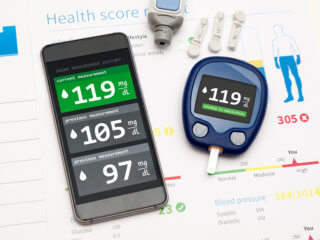Genome sequencing is essential because genomic data tells your disease risk circumstances, how you might respond to certain drugs, and even what qualities you might pass down to your children. The conventional processes for genome sequencing are more time taking, costing high and are very difficult to transport. So, there is a need for miniaturization with these genome sequencers. Oxford Nanopore Technologies thought of this way and introduced the world’s first and only nanopore DNA sequencer with the name of MinION.
What’s the product?
The MinION is a portable, real-time, long-read, low-cost device that has been designed to bring accessible biological examinations to anyone, whether in scientific research, education or a series of real world applications such as disease or pathogen surveillance, environmental monitoring, food chain surveillance, self-quantification or even microgravity biology. Ultra-long read lengths are acceptable (hundreds of kb) as you can choose your fragment length. The MinION streams data in real time so that analysis can be performed during the experiment and workflows are fully versatile.
| Recommended for you | |
| Genome sequencing at homes | |
| Preventive medicine in the omics era | |
| 370 CEOs of innovative digital health startups in Germany |
Technical specifications
| Dimensions | Length: 4 inches
Width: 1 inch |
| Weight | 87 grams |
| Type | Portable & pocket-sized USB memory stick |
| Technology | Nanopore-based
Up to 512 nanopore channels |
| Sample types accepted | Whole blood, plasma, and serum |
| Sample preparation | Simple and can take 10 minutes |
| Sequences performed | DNA, RNA, proteins and other long-chain molecules |
| Strand reading rate | 7500 bases per second |
| Connectivity | High speed USB 3.0 cable |
| Operational life | Limited to about 6 hours
But in that time, can read over 150 million bases |
| Miscellaneous |
|
Applications
One of the notable advantages offered by the MinION is its suitability for a broad range of applications. This means that it can be employed in almost any area of research.
- It can diagnose infectiously and as well as hereditary diseases.
- It can be used by the astronauts when they got sick in space. “Finally, we have a sequencer that’s small enough that we can send it up into space,” says NASA engineer Kristen John. With the MinION, astronauts could also perform experiments to see how bacteria react to microgravity, without first having to dunk their specimens into fixatives and bring them back to Earth.
- In fact, this technology can be best suited in Africa, where more number of people is suffering from the Ebola virus.
- 2016’s big threat, Mosquito-borne Zika virus which has been linked to a congenital disability called microcephaly and other conditions can also be diagnosed and can predict certain traits of it.
- By using this device, people with diabetes can monitor their blood sugar levels.
Not restrained to a laboratory environment, it has been utilized in the Arctic, on a mountain, in a jungle, and on the International Space Station. The MinION is being used for some biological analysis techniques including de novo sequencing, targeted sequencing, metagenomics, epigenetics and more.
Target user groups & markets
The need for miniaturization had made this technology to grow faster. Now commercially available, the MinION is in use by a thriving community of thousands of users in more than 55 countries, enabling a myriad of applications within the traditional laboratory environment and in the field. Presently, this technology is limited to developed countries and that too for specific communities only. According to Wall Street Journal, government and Academic research institutes are the principal buyers for sequencing machines. This may be due to the cost perspective or its size and weight which seems to be like a microwave or a fridge. But MinION had made it simple due to its cost of $ 1000 and small size (possibly handheld). This USB memory stick can have a better market in developed as well as developing countries also. As there is a need for sequencers in Africa, where Ebola is spreading rapidly and America & Pacific, who are the sufferers of Zika virus, there is a need for this technology which implies a broad scope in the market.
Competitors amongst genome sequencing devices
MinION has to think about the market and must take into account about their competitors. Moreover, I am discussing two major competitors.
- Its primary competitor is ION TORRENT which has announced the full genome sequencing for just $1000 or less with its sequencing platform, Ion Proton sequencer. It is the world’s first desktop semi-conductor-based gene sequencer. It is also the first machine that can read genome in two hours.
- Illumina Inc. of San Diego, California announced HiSeq 2500, a “genome-in-a-day” sequencer. Its cost of sequencing each genome is between $3000 and $5000, depending on the number of sequenced samples.
Future plans
Unlike other sequencers, no PCR or other DNA amplification techniques are not needed for a MinION. Because it works on Nanopore technology, which provides accurate results and thus a bright future. The company has announced that their goal is to enable the analysis of any living thing, by any person, in any environment. One team took it inside the Tanzanian rainforest to identify frogs. Another is intending to take it aboard a marine research vessel in the Indian Ocean during this summer. John and Castro are planning to send it into space. Oxford Nanopore is starting a hardware and software upgrade that will revolve up the MinION’s speed by 4 to 7 times. The group is also launching the PromethION—the MinION’s bigger, cousin. Built for large-scale sequencing, its 144,000 nanopores could conceivably churn out 120 gigabytes of data every day, equivalent to 40 human genomes. The first of these beasts have already shipped, and more are set to follow. A sampling device could also be utilized to check for viruses in air or bacteria in a food-production line. It might not even need a human worker; just program it to get regularly, and upload the data to the cloud. That would make what Brown terms the Internet of Living Things: a network of sensors, sequencing the world.
So, it seems that we are going to enter into the world where machines can help doctors both prevent and treat illness.
Image credit: www.istockphoto.com

















